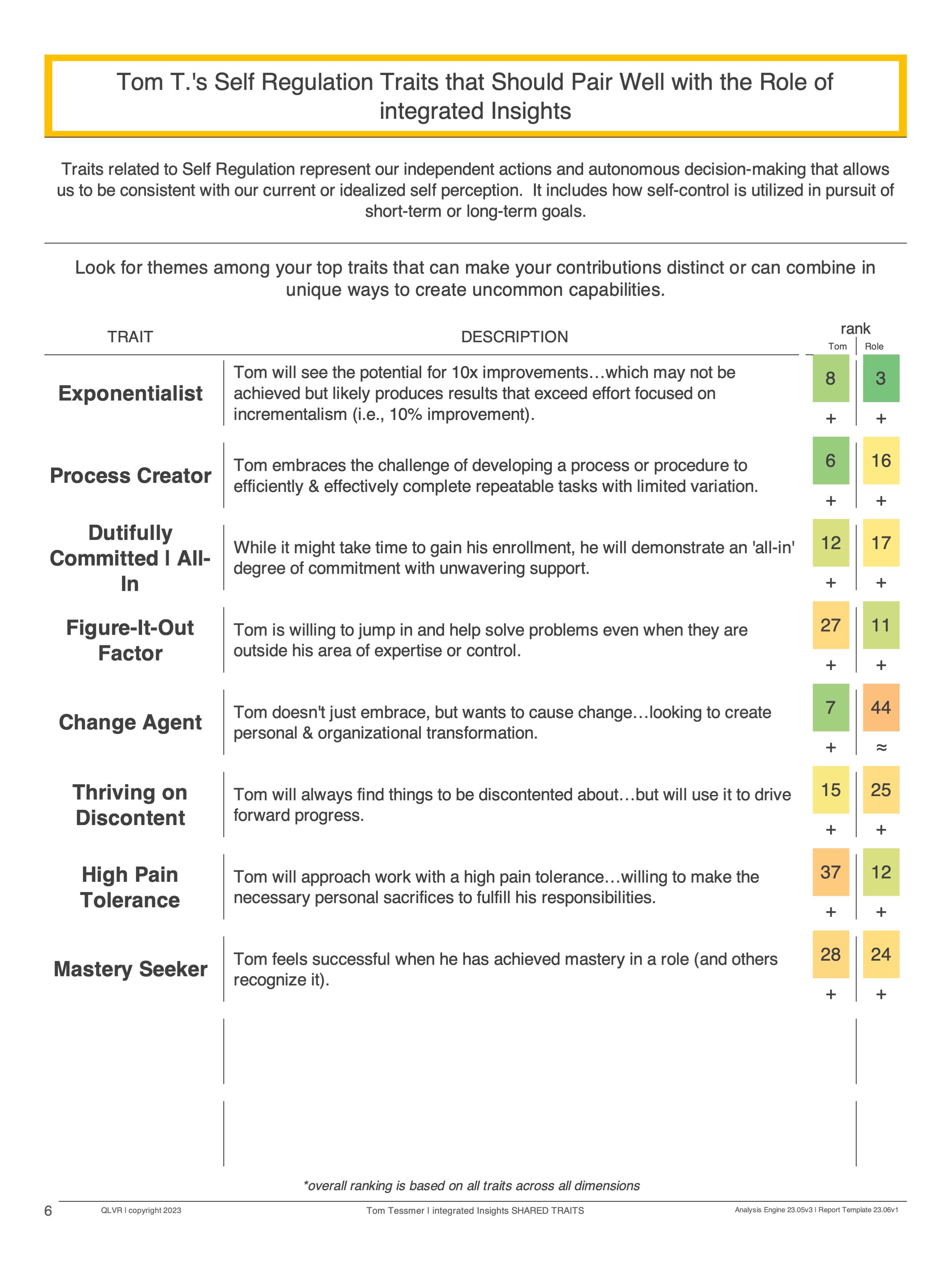QLVR
a better tool to profile and compare professional personalities, and a platform to use that information to radically change every aspect of the employee experience.
QLVR Deconstructs the 3 Core Dimensions of How Work Gets Done
-
Emotional Intelligence
How we perceive the world around us and use subjective information to understand and interact with others.
-
Intellectual Style
How we gather information and process it to make decisions.
-
Behavioral Inclinations
How we translate decisions into actions and pick the best approach to complete tasks.
It begins with an online profile assessment to teach the system how you get work done.
Simply indicate preference between opposing statement pairs
Choose the version that is right for you
-
PRO
The primary version takes about 75 minutes to cover all statements , personal expectations and constraints(about as long as a typical job interview). In addition to archetyping, the data ingestion enables full functionality of the trait-based profiling, pairing and constraint engines.
-
LITE
This version only takes about 20 minutes to complete because it evaluates a limited range of statement pairs. It is designed for cultural or teamwork assessment, and the data is only enough to make the archetyping and archetype pairing functional. It is only recommended for organizations doing lite profiling.
PROFILING ENGINE
Every answer is encoded as signals associated with 9 Archetypes, 28 Building Blocks and almost 400 individual traits
The system has the computational capacity to generate millions of unique parameters
Scoring and sorting of so many traits is done to find the special few that are most defining based on two types of bias:
Observational Bias: How we observe, perceive and understand ourselves and the environment around us.
Action Bias: How we approach independent actions & social interactions to influence others and get tasks done.
















